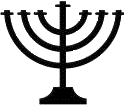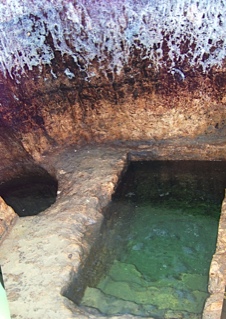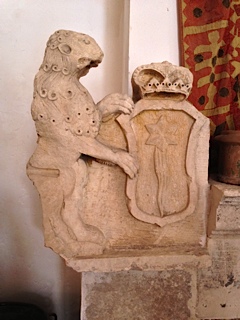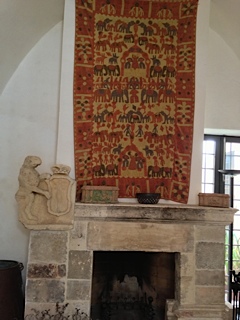The Jews In Sicily

The Jews In Sicily | 
|
It is a rare moment in one's life when you feel yourself touching your own history as I did this past June when I descended the steep, dank steps - 18 meters below sea level - to the 6th century ancient Mikva in Siracusa, Sicily. My trip to Sicily was largely made up of people whose last names ended in vowels who were of Italian and mostly Sicilian ancestry. They were in search of their heritage - some meeting relatives, others eager to see the ancestral landscape. Their stories added to the spirit of the trip, but I was feeling a little left out. Then I learned some surprising things about the history of Sicily's Jews - a comunity that dates back to the 1st century before the common era. They were well integrated into the social and economic fabric of life on the island and lived in 52 different towns. That all changed in 1492 when they were under the rule of Ferdinand II & Isabella I of Spain who issued the edict that all Jews were to be expelled or converted within three months. All their wealth was confiscated. About 3/4 of the Jews left - over 50,000. Those who stayed converted and changed their first names. Samuel, David and Abrahams became Giuseppe, Salvatore and Francescos Before they left, the Sicilian Jews covered up the entrance to the Mikva and filled it with soil and stones. They wanted to keep authorities from discovering and destroying it so they could use it upon their return someday. Those who stayed never reveaaled its location and over time their secret was forgotten...For 500 years that is until 1989 when a developer renovating a building to become a hotel discovered it. This brings me back to my descent into the Mikva. When my guide mentioned that there was a Mikva in Ortigia, the oldest part of Siracusa, I expressed an interest in seeing it. He found out there was a 1:00 o'clock tour. My cousin and I really didn't know where it was - other than in the labyrinth of the narrow medieval streets of the Giudecca, the old Jewish Quarter. As the time approached we were lost and had to ask three different people "Dove è il bagno ebreico?" It seemed like divine intervention that we found it - arriving 10 minutes late - and did not miss the tour. At the bottom of the steps were three pools of water for the women and one more for utensils. The architectural setting was exactly as it had been when first constructed in the Byzantine era - a vaulted ceiling with pillars supporting roman style arches. Oil lamps were found in the excavation. There were two side rooms - each with a few steps leading to a pool of water - probably for rabbis and 6th century machers (big shots). I dipped my hand in the water. I thought about the ordeals this community faced: Saying good-bye to the Sicily they loved, relocating wherever they could - out of reach of the inquisition, the cruelty and anti-semitism of Ferdinand and Isabella, the fears they must have had for their own and their children's future as the expulsion grew close. I thought too about the fate of those who stayed and gave up their freedom to live as Jews - though perhaps some were crypto-Jews. More than 500 of them were burned at the stake - accused of being insincere Christians. I had entered a time capsule and for a moment I was back in the 15th century. It felt at once personal and mystical to be in their sacred space - where they had come for spiritual renewal in the living waters for nearly 10 centuries. On Yom Kippur, I think of this forlorn Jewish community in 1492. My imaginings of their fears, hopes and prayers blend with my own and I am grateful to live in a time and place of religious freedom. text and photographs by Margie Moskovitz |
 |
The pools of running water are located 18 meters below the ground floor of the Hotel Residence Alla Giudecca. The Hotel is at the intersection of Via Giovanni Battista Alagona and Viccolo Quarto alla Giudecca, in the old Jewish Quarter, known as the Giudecca. |
 < |
Three pools of running water for women. The vaulted ceiling with arches. |
 |
The carved stone with The Lion of Judah, star of David found in the Mikva. |
 |
The carving now placed by the fireplace. |
| Return to... Top of Page |
| or to... Sicily Page |